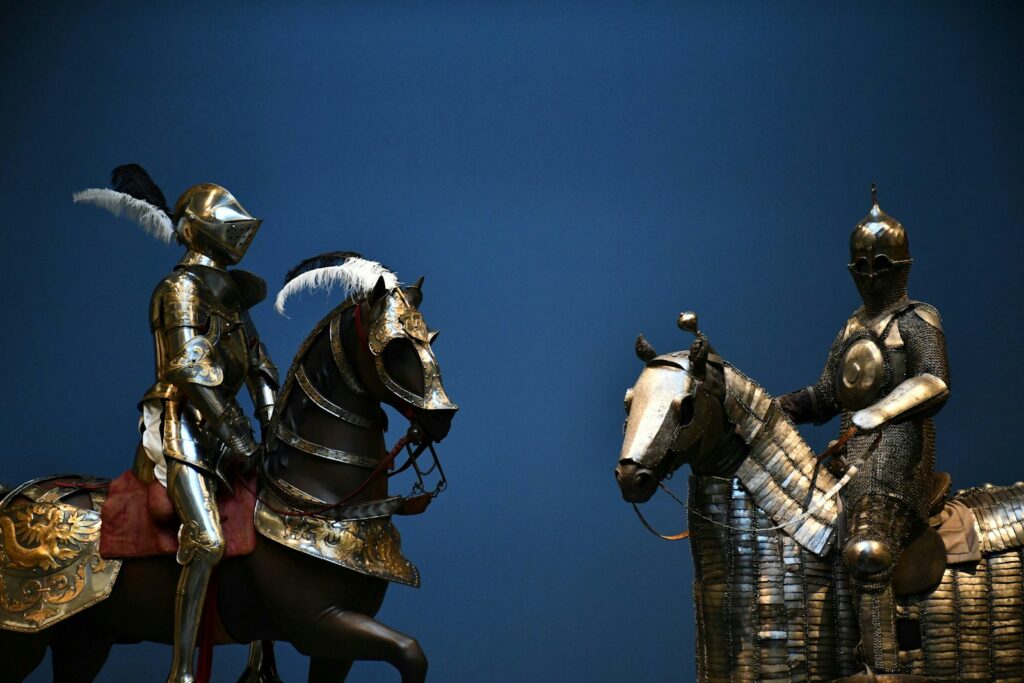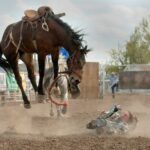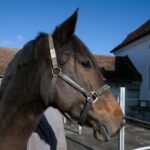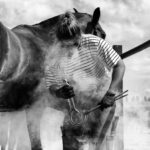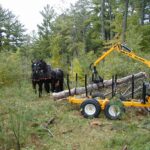Medieval battlefields were transformed by the thundering presence of armored war horses carrying knights into combat. These magnificent animals weren’t merely transportation—they were living weapons, trained partners in warfare, and symbols of nobility. The specialized breeding, training, and protection of these battle steeds represents one of history’s most fascinating examples of the bond between humans and animals. From the earliest destriers to the elaborate plate armor of the late Middle Ages, the evolution of war horses and their protective gear tells us a remarkable story about medieval warfare, craftsmanship, and the importance of these animals to the societies that depended on them.
The Rise of the Medieval War Horse
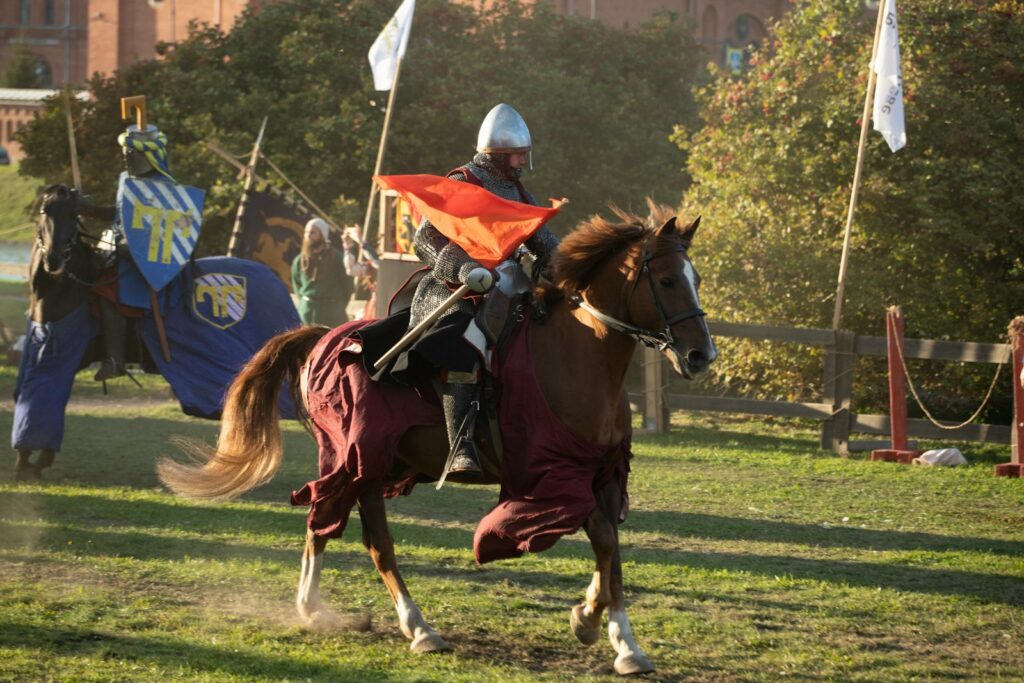
The concept of mounted warfare predates the medieval period by thousands of years, but it was during the Middle Ages that the heavily armored knight on horseback became the dominant force on European battlefields. This transformation began around the 8th century with the introduction of the stirrup, which revolutionized mounted combat by giving riders greater stability. By the 11th century, the specialized breeding of larger, stronger horses specifically for warfare was well underway throughout Europe. These animals weren’t just larger than ordinary riding or farm horses—they were carefully selected and bred for traits including courage, strength, and the ability to remain calm amid the chaos of battle. The development of these powerful war horses coincided with the rise of feudalism and the professional warrior class, creating a military system where the mounted knight became the supreme battlefield weapon.
Types of Medieval War Horses
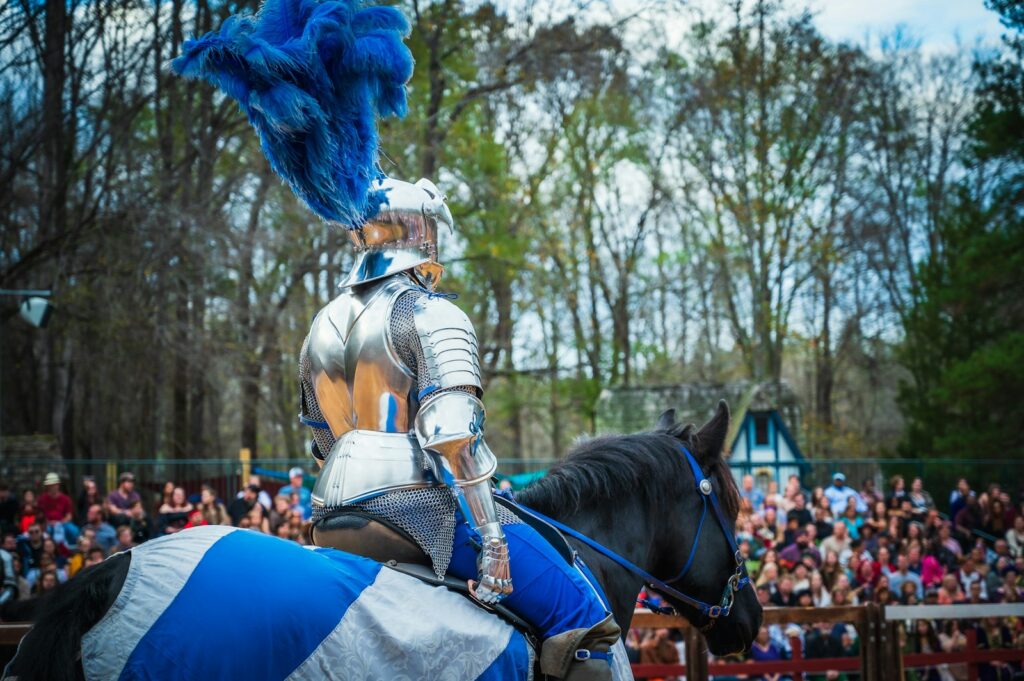
Medieval war horses came in several specialized types, each bred for specific purposes on and off the battlefield. The most famous was the destrier, the true “knight’s horse”—large, powerful, and trained for the shock of direct combat, these were the medieval equivalent of a tank. Slightly smaller but still impressive were coursers, prized for their speed and agility, making them ideal for skirmishing, scouting, and pursuit. The palfrey served as a comfortable riding horse for travel and everyday use by knights and nobility when not in battle. Finally, rounceys were all-purpose mounts, often used by squires or less wealthy mounted soldiers who couldn’t afford the specialized war horses of knights. These distinctions weren’t just about size—each type represented different training regimens, costs, and battlefield applications that together created a sophisticated system of mounted warfare.
Breeding and Value of Destriers
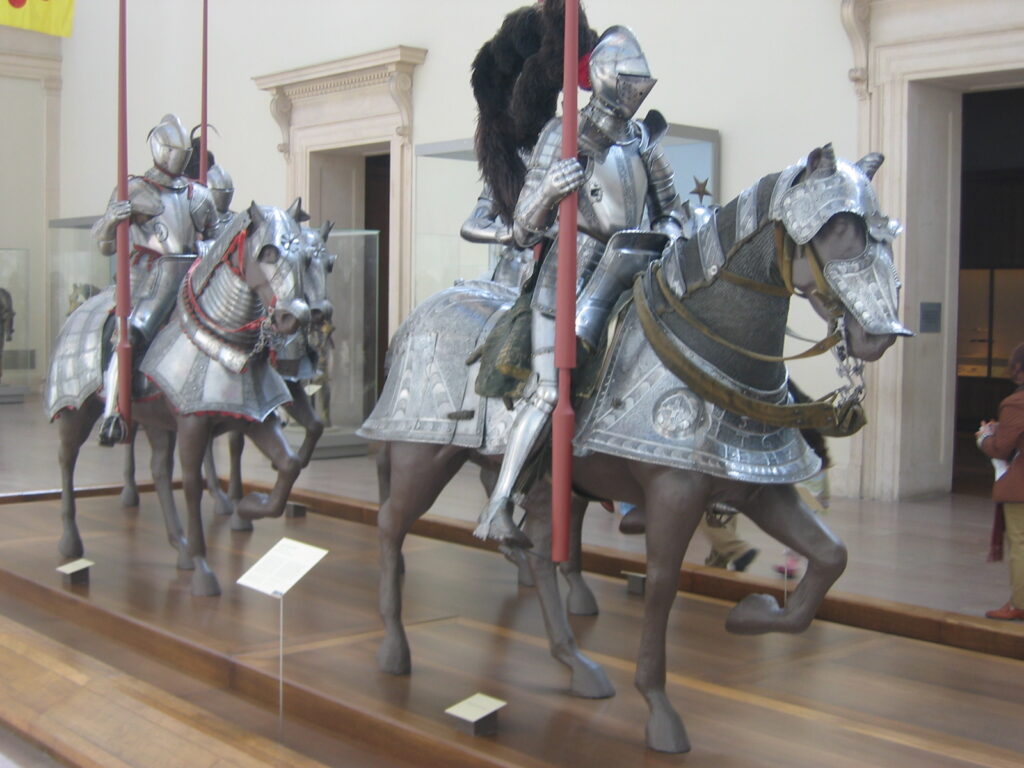
The destrier—the elite war horse of medieval Europe—represented a significant investment in both time and resources. These animals were the product of selective breeding programs that emphasized size, strength, and courage, creating horses that stood around 15-16 hands high (significantly larger than most contemporary horses). The financial value of a quality destrier could be astronomical, often costing as much as a small manor house or many times the annual income of an ordinary worker. Records show that in the 13th century, a single exceptional war horse might cost more than all the other equipment of a knight combined, including armor, weapons, and additional horses. The extraordinary value placed on these animals reflected not just their military utility but also their status as symbols of nobility, with bloodlines carefully tracked and prestigious studs maintaining detailed breeding records similar to modern thoroughbreds.
Training for Battle
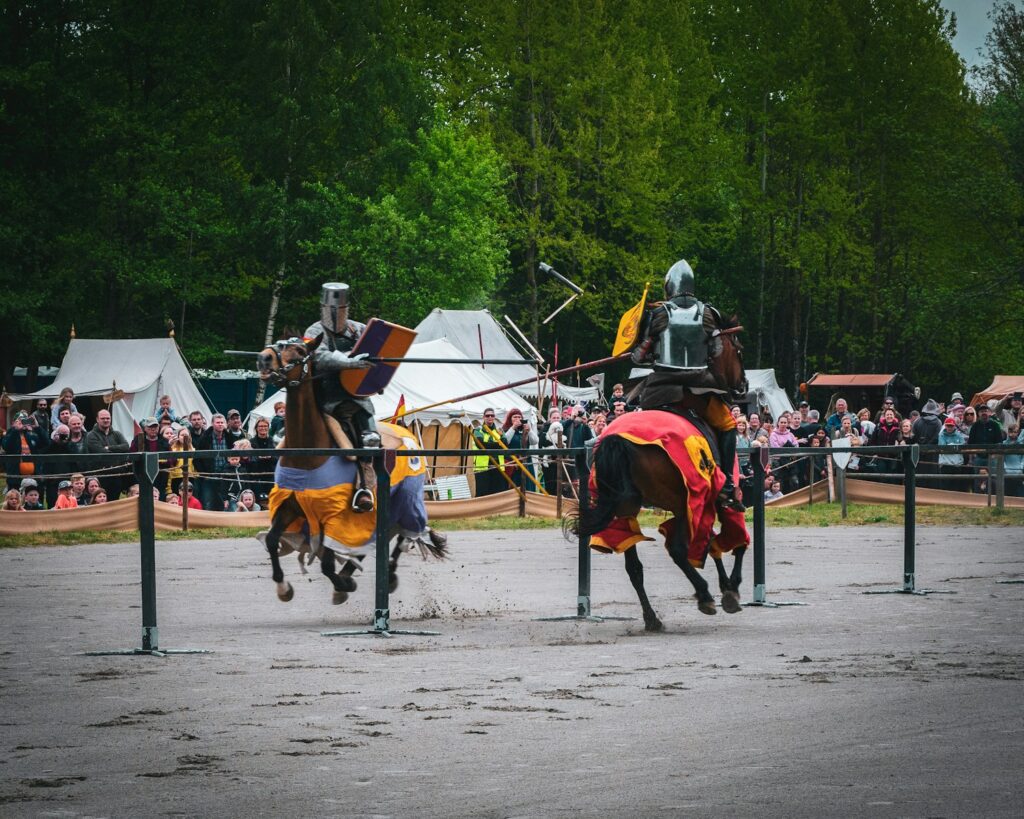
Training a war horse was a years-long process that began when the animal was still young, requiring patience, expertise, and specialized techniques. Unlike modern horses, destriers needed to overcome their natural flight instinct and instead charge directly into danger—a behavior that runs counter to equine instincts. Trainers used progressive desensitization to accustom horses to the noise, smells, and chaos of battle, gradually introducing them to flapping banners, clanging weapons, and loud noises. The most sophisticated training involved teaching horses to kick, strike, and even bite on command, turning the animal itself into a weapon. Additionally, war horses learned complex movements for battle maneuvers, including the ability to turn quickly in formation and remain steady during the thunderous impact of a charge while bearing a heavily armored rider.
Early Horse Protection: Caparisons and Scale Armor
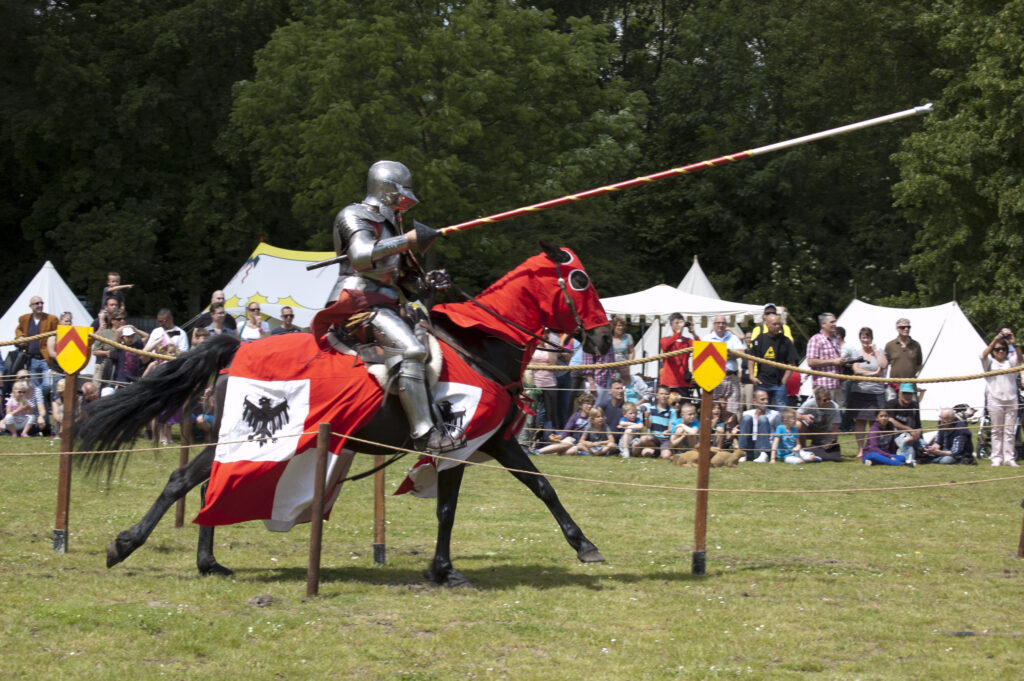
The earliest forms of horse armor were primarily fabric coverings called caparisons, which initially served more for identification and display than protection. These colorful cloth coverings, adorned with heraldic symbols, helped identify knights in the confusion of battle while also providing minimal protection from glancing blows. By the late 11th century, more substantive protection appeared in the form of scale armor, where small overlapping plates were sewn onto a fabric backing. This early horse armor protected vital areas like the chest, neck, and sometimes the head, while still maintaining the horse’s mobility and preventing overheating during extended battles. Archaeological findings suggest that some of these early protective systems combined multiple materials—leather for flexibility, padded fabric for cushioning impact, and metal scales for deflecting weapons—creating effective protection that predated full plate barding by centuries.
The Development of Mail Armor for Horses
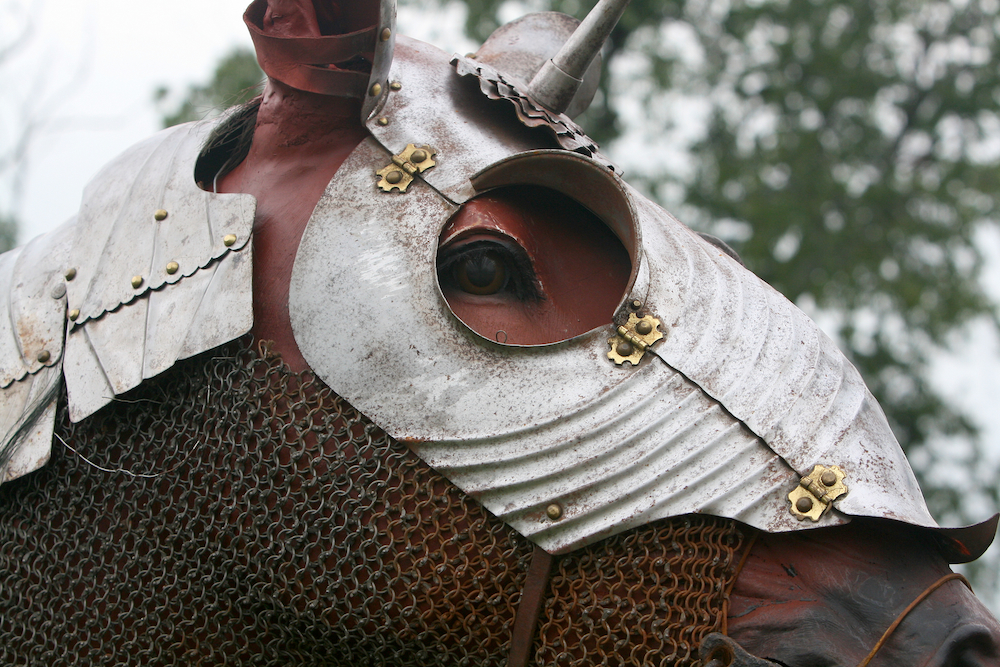
Chain mail represented a significant advancement in equine protection, becoming widespread for war horses during the 12th and 13th centuries. These intricate garments consisted of thousands of interlocking metal rings, creating a flexible mesh that could absorb the impact of slashing weapons while allowing the horse full range of movement. A complete mail trapper (horse covering) could weigh over 40 pounds and required skilled craftsmen hundreds of hours to complete, making them extremely valuable pieces of military equipment. The mail typically covered the horse’s neck, chest, and sometimes the hindquarters, with the weight distributed to minimize restriction to the animal’s movement. Despite its effectiveness, mail armor had significant drawbacks—it was extremely labor-intensive to produce, required constant maintenance to prevent rust, and still left horses vulnerable to the increasingly powerful piercing weapons developing during this period.
The Golden Age of Plate Barding
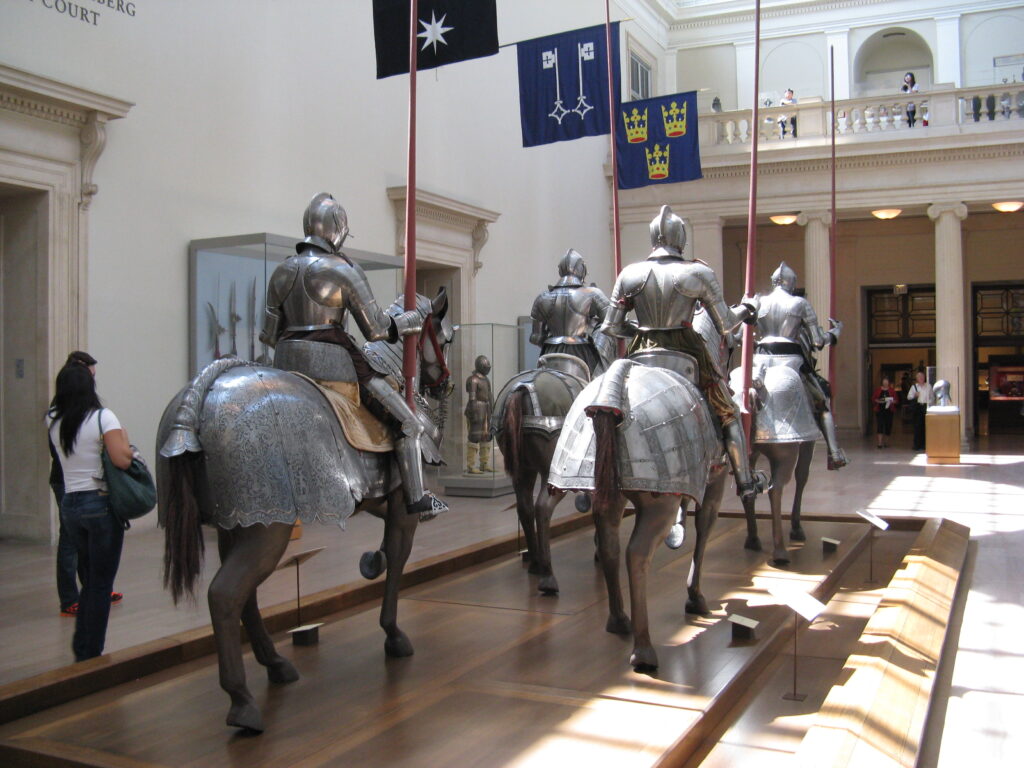
The 15th and 16th centuries marked the pinnacle of horse armor development with the widespread adoption of plate barding—comprehensive armor systems made of shaped metal plates. These sophisticated protection systems included the chanfron (head protection), crinet (neck), peytral (chest), flanchards (sides), and crupper (hindquarters), creating nearly complete coverage for the war horse. Master armorers crafted these pieces not just for protection but also as works of art, with the finest examples featuring elaborate engravings, gilding, and decorative flourishes that demonstrated the owner’s wealth and status. The technical sophistication of late medieval horse armor is evident in the articulated joints that allowed freedom of movement while maintaining protection, and weight-saving design features like strategic thickening only in the most vulnerable areas. At its height, a complete set of plate barding represented the cutting edge of medieval military technology and metallurgical knowledge.
The Chanfron: Protecting the Horse’s Head
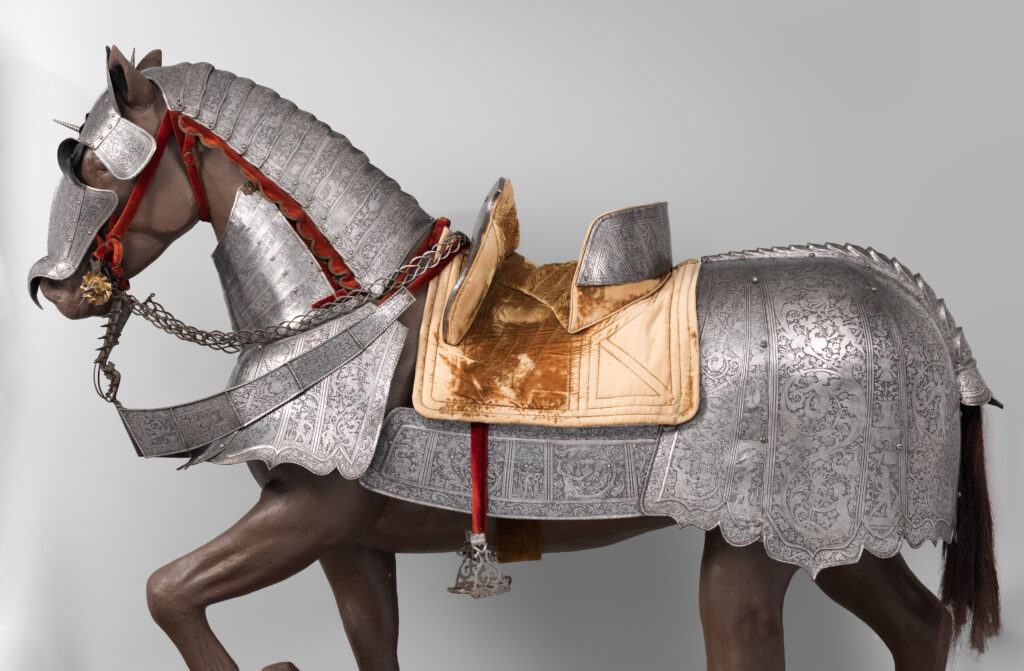
The chanfron was perhaps the most visually striking element of horse armor, designed to protect the horse’s face and head from weapons. These metal face plates often featured decorative elements including embossed patterns, heraldic symbols, and in some elaborate examples, horns or spikes that transformed the horse into an even more intimidating presence on the battlefield. Beyond mere protection, the psychological impact of a fully armored horse charging with a decorated chanfron cannot be overstated—these elements were designed to inspire fear in enemy forces and horses. The most sophisticated chanfrons included articulated ear protectors, breathing holes carefully positioned for the horse’s comfort, and eye coverings designed to protect while maintaining visibility. Some surviving museum examples show extraordinary craftsmanship, with chanfrons custom-fitted to the individual horse’s head shape and featuring the same quality of workmanship as the knight’s own helmet.
Mobility vs. Protection: The Armor Balance
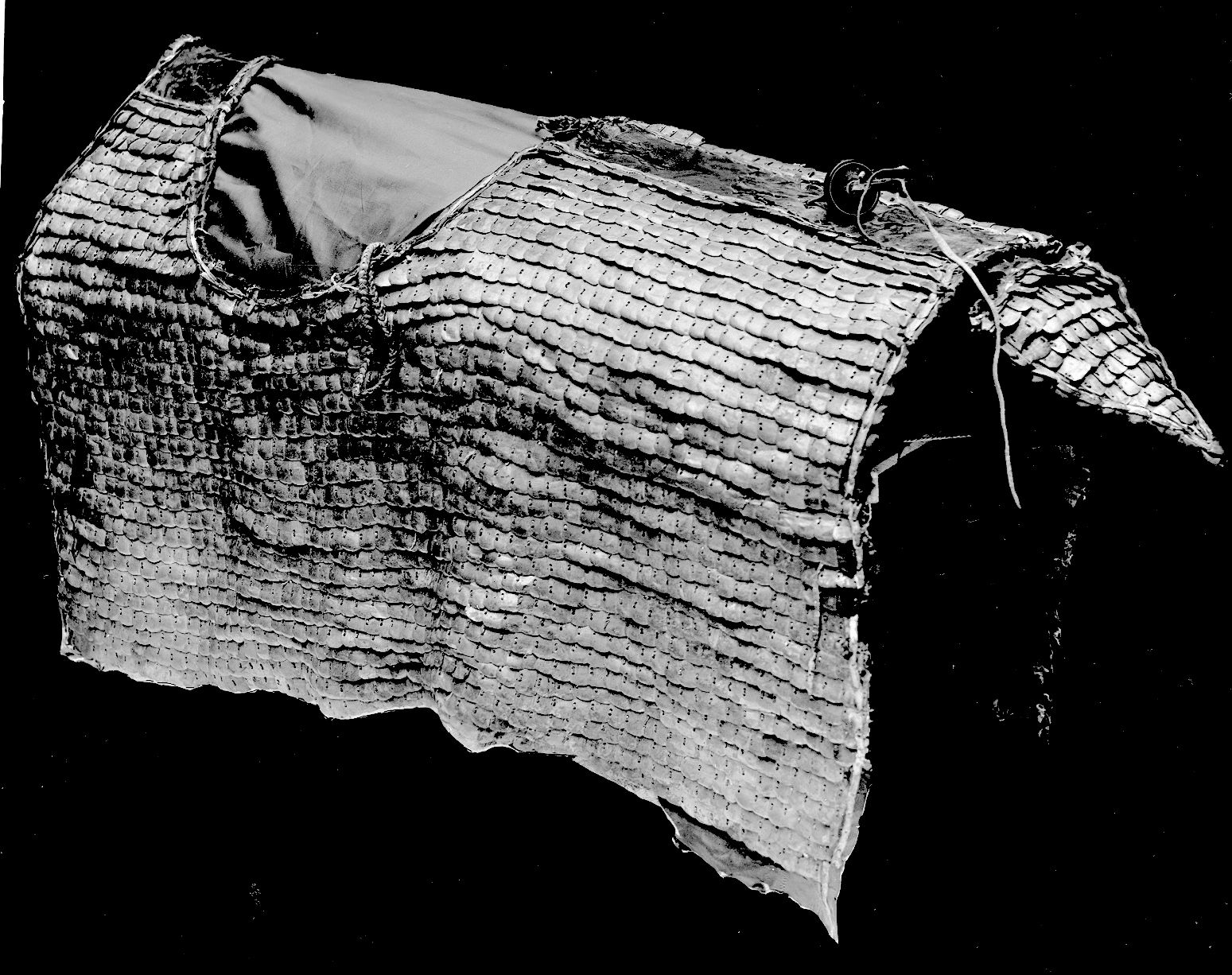
The design of horse armor constantly navigated the tension between protection and mobility, with different periods favoring different approaches to this fundamental trade-off. A fully armored war horse in plate barding could carry up to 80 pounds of armor—a significant weight that affected speed, endurance, and maneuverability on the battlefield. Armorers developed numerous innovations to address this challenge, including carefully articulated joints, strategic distribution of thicker plates only where most needed, and the use of different materials for different body areas. Even the attachment systems evolved, with later designs featuring quick-release mechanisms that would allow a horse to be freed from heavy barding if it fell in battle, potentially preventing the animal from being trapped under its own protective gear. This balance shifted over time, with later periods generally favoring increased protection as weapons became more deadly, until the eventual decline of armored cavalry with the rise of firearms.
Regional Variations in Horse Armor
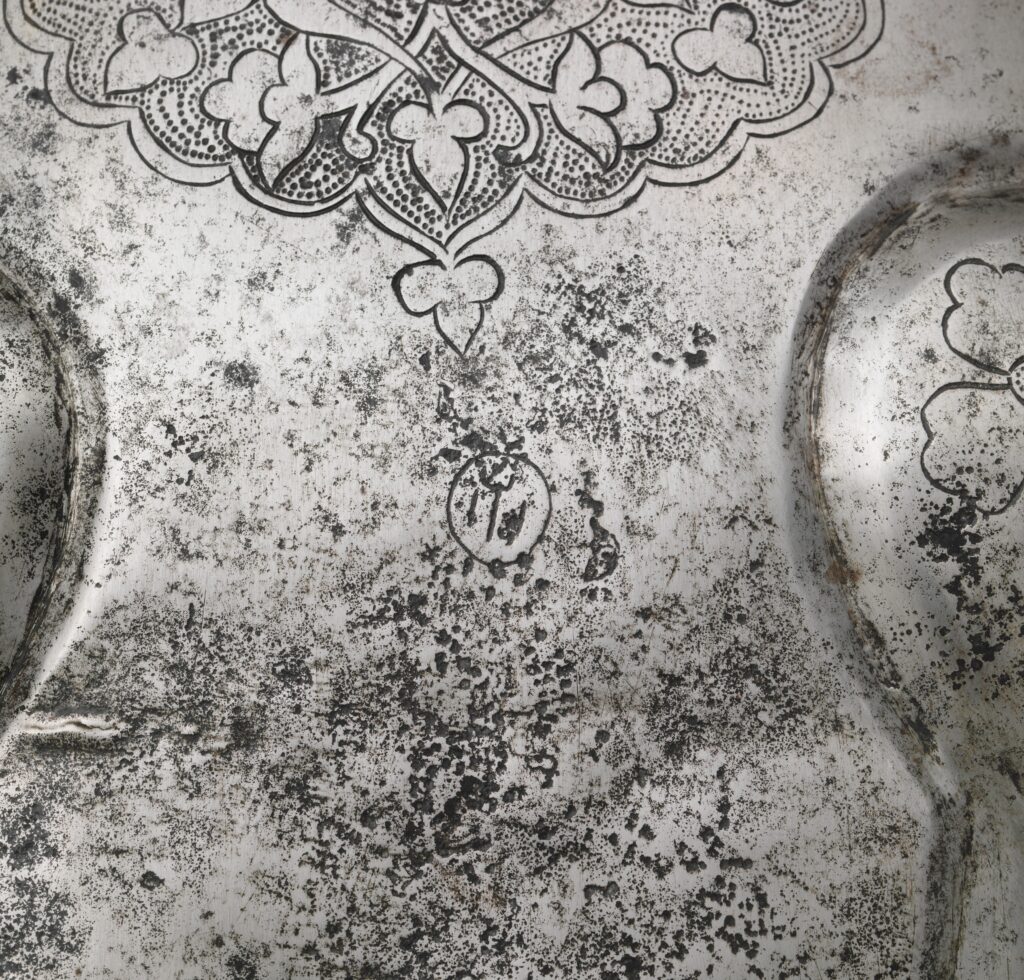
Horse armor development wasn’t uniform across medieval Europe, with distinct regional traditions creating recognizable styles with different priorities and techniques. Italian barding was renowned for its elegant design and lighter weight, emphasizing mobility and artistic merit with finely etched decorations and streamlined profiles. German armorers, by contrast, created more robust and comprehensive protection systems, often featuring thicker plates and additional reinforcement at vital areas, prioritizing maximum protection even at the cost of some agility. Eastern European and Byzantine horse armor showed clear influence from Asian traditions, incorporating lamellar construction (small plates laced together) and extensive use of hardened leather alongside metal components. These regional differences weren’t merely aesthetic—they reflected different battlefield threats, available resources, and cultural values regarding the role of cavalry in warfare.
The Economics of Equipping War Horses

The financial burden of fully equipping a war horse represented a staggering investment that shaped medieval military organization and feudal obligations. By the 15th century, a complete set of high-quality horse armor could cost the equivalent of several years’ income for a prosperous merchant, placing such equipment firmly in the realm of the nobility and wealthy knights. This economic reality reinforced the class divisions within medieval armies, where only the elite could field the most heavily protected mounts. The maintenance costs were similarly substantial—specialist care, replacement parts, and regular refitting as horses grew or changed condition added to the ongoing expense. Kings and wealthy nobles sometimes provided horse armor to their most valued knights as gifts of extraordinary value, and the capture of an enemy’s armored war horse was considered a prize worth nearly as much as ransoming the knight himself.
The Decline of Armored War Horses
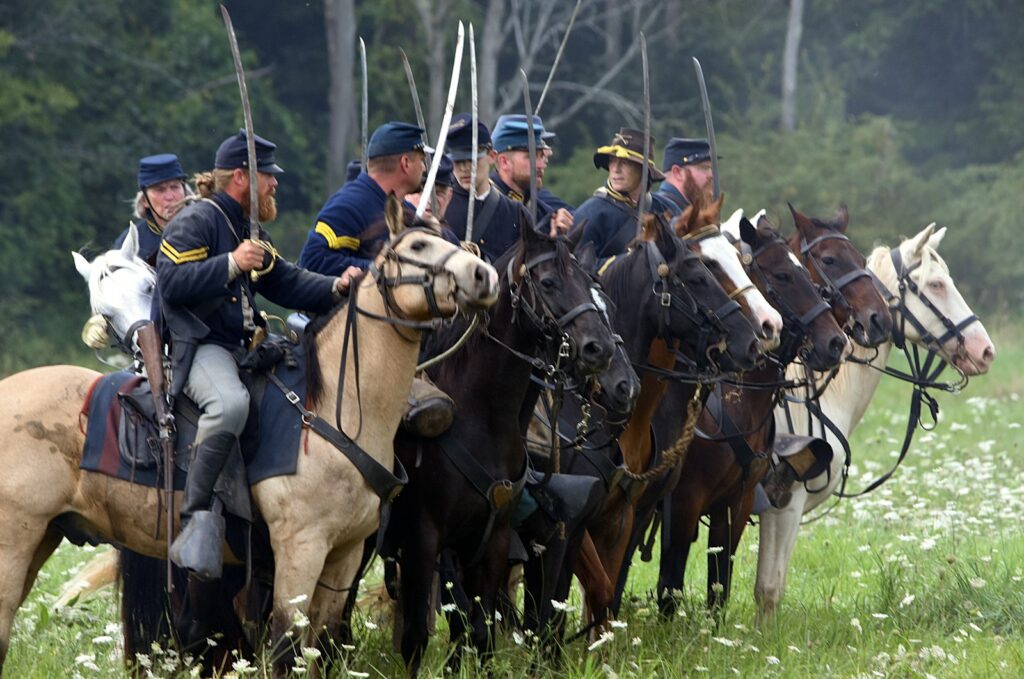
The eventual decline of the armored war horse came gradually with the changing nature of warfare in the late medieval and early Renaissance periods. The development of longbows, crossbows, and eventually firearms created battlefield threats that no practical amount of horse armor could fully counter. By the 16th century, the increasing effectiveness of infantry formations armed with pikes and early firearms had diminished the battlefield dominance of heavy cavalry. Economic factors also played a role, as maintaining armored knights and their expensive mounts became increasingly difficult to justify as military technology evolved. The final phase saw ceremonial and tournament uses outlasting battlefield applications, with elaborately decorated horse armor becoming more about display of wealth and prestige than practical protection. This transition marked the end of nearly five centuries where the armored war horse had been among the most fearsome and influential military technologies in Europe.
Surviving Examples and Archaeological Evidence
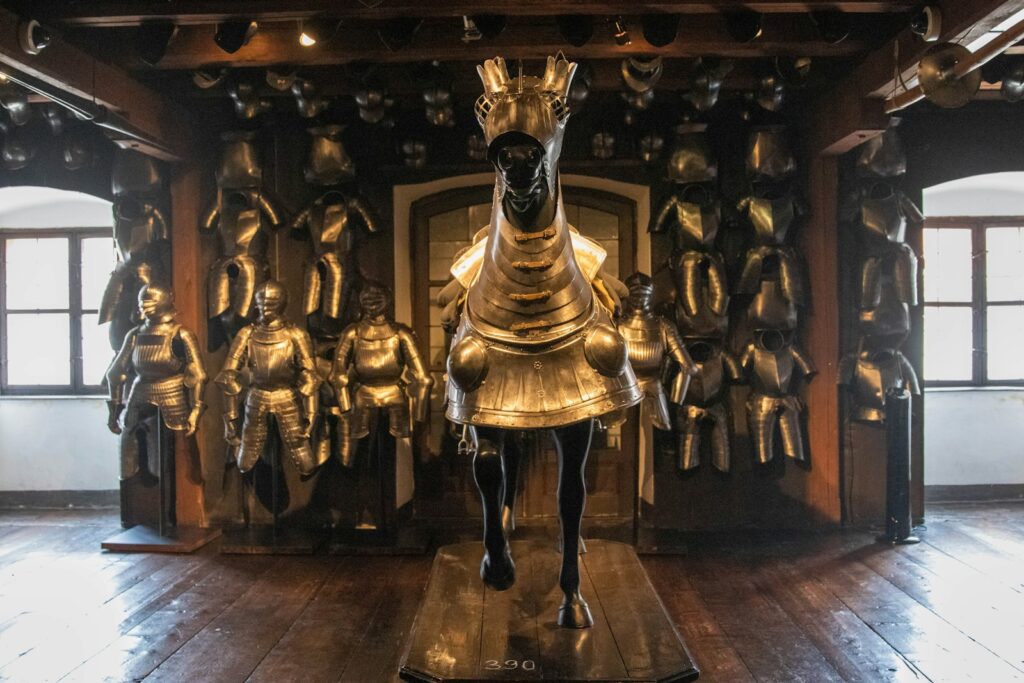
Our understanding of medieval horse armor comes primarily from the remarkable examples preserved in museum collections around the world. The Royal Armouries in Leeds, the Metropolitan Museum of Art in New York, and the Kunsthistorisches Museum in Vienna house some of the most complete and well-preserved examples, often as part of matched sets with the knight’s own armor. Archaeological excavations at battle sites have yielded fragments that provide insights into the armor worn by ordinary war horses rather than just the elite examples preserved for their artistic value. Modern research techniques, including metallurgical analysis and experimental archaeology where reconstructions are tested under realistic conditions, have dramatically expanded our understanding of how these armor systems performed in actual use. These surviving pieces represent not just military history but also showcase the extraordinary craftsmanship of medieval artisans working at the intersection of art, engineering, and practical battlefield necessity.
The Legacy of Medieval War Horses and Their Armor
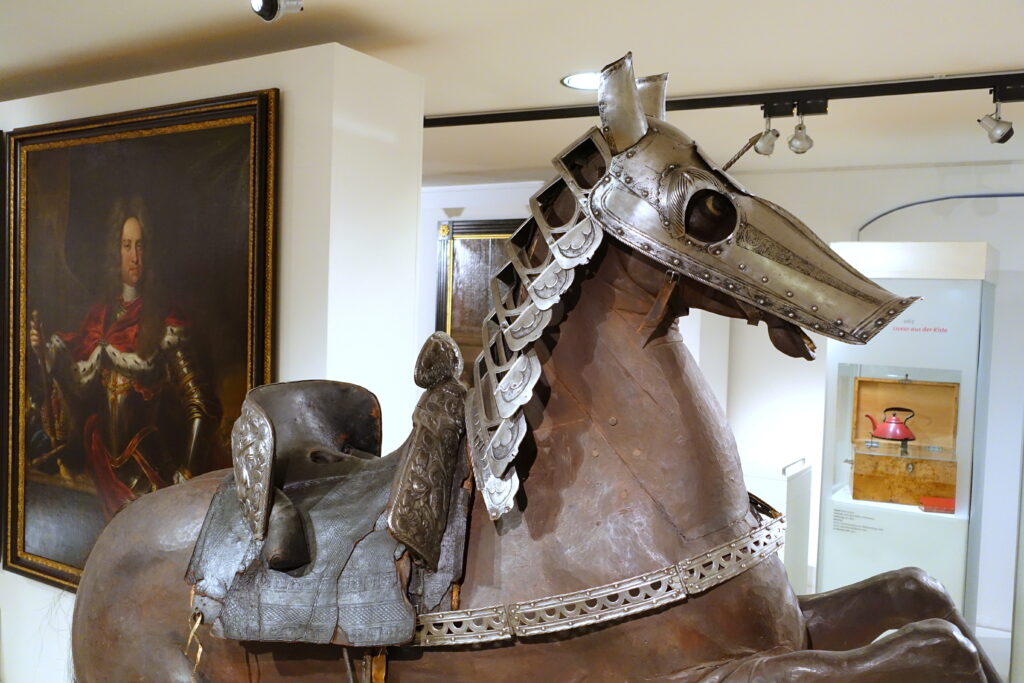
The armored war horse represents one of history’s most enduring symbols of medieval warfare, continuing to capture our imagination through art, literature, and popular culture. Though the practical military application of horse armor ended centuries ago, its influence extends far beyond the battlefield. The sophisticated breeding programs established for medieval destriers laid foundations for modern horse breeding, while the technological innovations in metallurgy and armor design influenced developments in many other fields. Perhaps most importantly, the relationship between knights and their carefully trained, expensively equipped war horses exemplifies a unique bond between humans and animals forged in extreme circumstances. These magnificent animals, carrying armored warriors into battle while wearing their own elaborate protection, embodied both the brutality of medieval warfare and the extraordinary heights of craftsmanship, training, and specialized breeding humans could achieve when necessity demanded it.

